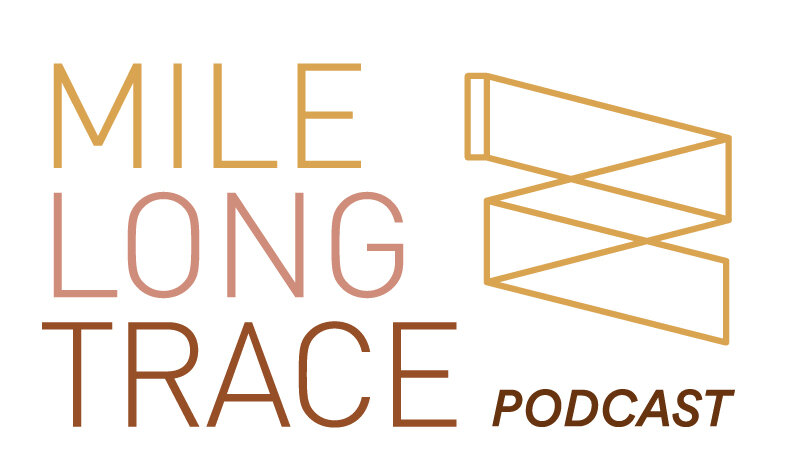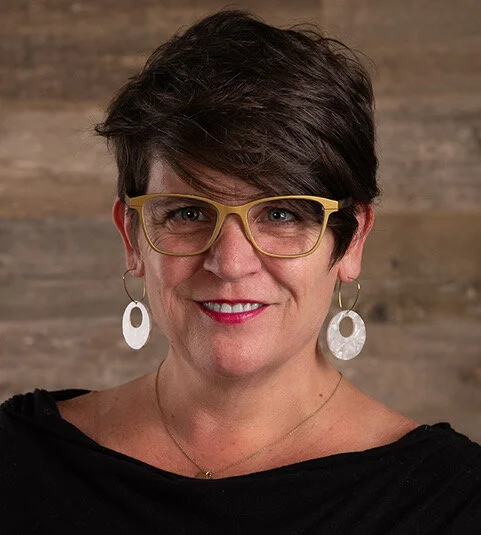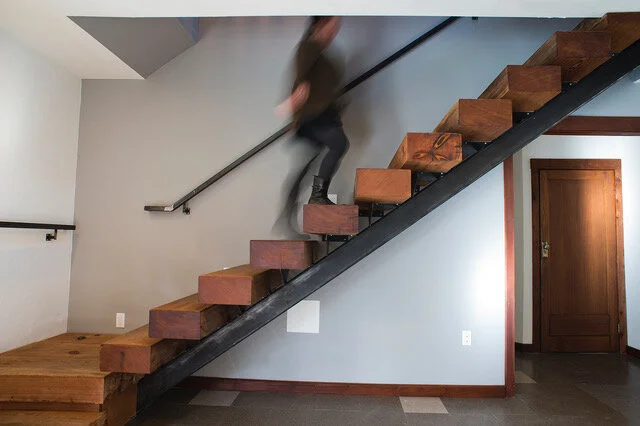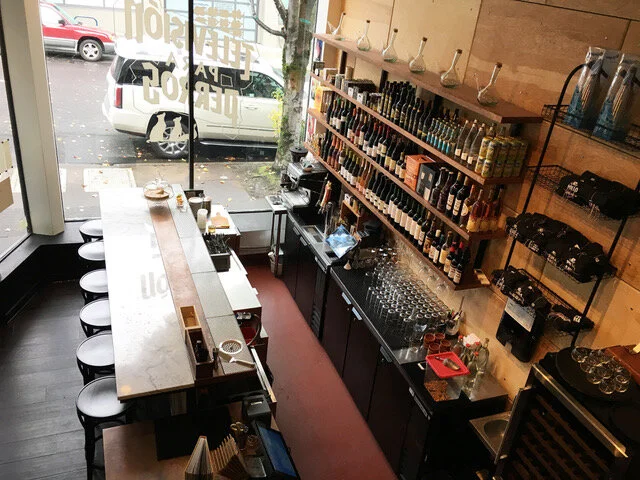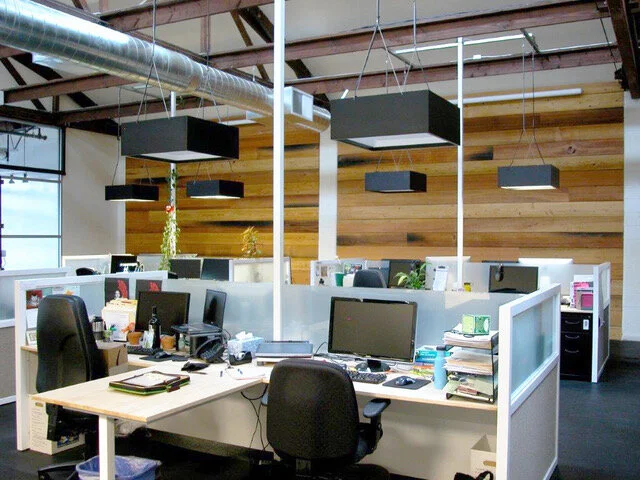“It's an old fashioned. It's kind of an architectural cocktail because you've got to have just the right amount of whiskey, just the right amount of sugar and just the right amount of bitters. Take these really simple, strong flavors and then mix them together to create this really complex flavor. Umm, it's a flavor bomb. A good interior is like a bomb of experience.”
- Ellen Cusick
Overview
Emerged! You will come away with insight into one designer’s path. Along the way you will hear about the jankety and scrappy side of her interior design practice.
This interview is designed for the emerging practitioner. The discussion will focus on how Ellen Cusick, a seasoned practitioner has navigated her career path. If you’re a designer that is wanting to grow your practice or you have a degree in Interior Design and are unsure where you want to take your practice this episode is for you. Enjoy listening to how this kick ass woman navigates the permit department and relates the design process to her favorite cocktail. Why, because good interior design is a ‘flavor bomb’.
Ellen Cusick is joining us today. She is the principle of EMC Interior Design LLC in Portland, Oregon.
Designs and project manages hospitality, retail & residential interior projects from programming through construction observation.
She is most notably known for being the kick ass woman that can effectively navigate the City of Portland permit and building code department.
She has her NCIDQ certificate, she has served on the ASID board, written exam questions for CIDQ, and advocated for interior design legislation.
Ellen has been practicing interior design for 20 years.
Show Notes
Questions 1: What initially attracted you to the profession of interior design?
Ellen: I don't know exactly what it was, but I do know that when I was in high school I thought maybe I would be an interior designer when I grew up and then half of my class said they wanted to be one. I went to a small school with 45 women in my class. Ten of them who I had taken classes with over four years. They all said they wanted to be an interior designer. And I was like, I can't be an interior designer because they are all going to be interior designers. So I went to college and studied basically everything but interior design, art history, english lit, humanity's, environmental science, and geology. I was all over the place. And then my father died. And I thought I don't know what I want to do and life's too short. So I stopped going to school for a couple of years, and then I moved out west and thought. I'm gonna be an interior designer and I went back to school in Portland. I started at Bassist college about eight years after I finished high school. It took me a while, but I finally did what I wanted to do.
Questions #2: What aspect of the profession do you feel fills your bucket?
Ellen: So I think a better question would be what doesn't because most of it makes me really happy. But I think at the top of that list is that first initial dive into space planning. You know, once I've done the site survey and I've got my base drawing printed out. I pull out my trace and I get my pencil and my eraser. And I just start going to town with what's going to go where. There's something about all of the ideas just flowing out onto the onto the trace. You know, that role gets 18 feet long with sketches on it and then eventually the one solution just happens. And then I pull it in to autocad. It's so satisfying when that one that you know is the right answer pops in. I also love that final push when you're working on the permit documents or the construction documents. Where you are crossing the T's and dotting the I's. It just really feeds my little virgoness you know, I like getting everything right where it needs to be.
Elizabeth: So you like problem solving?
Ellen: Yes, problem solving. That's what we do, right? Nine times out of 10 it's about what the next problem is?
Elizabeth: Is that what you thought interior design was when you first started thinking about it as a profession?
Ellen: Absolutely not. I didn't even know commercial interior design existed. I just thought it was only residential decor. I had no idea that it was so closely linked to architecture and now primarily what I do is interior architecture. I hardly do any decoration. I think part of it is because like I said, I like the crossing of the T's and dotting the I’s. Finding solutions within the strictures set out by code is really a big challenge, right? You can come up with an amazing design but if it's not to code, you can't build it. It is like a crossword puzzle. You've got five squares that you've gotta put one word into and finding out what that word is. I think the other big thing is relationships and my ability to talk to the plans examiner in such a way that they get what's happening and communicating well on the page that it's clear what's happening. So that they can say yes we can sign off on this. So it's relationships and my ability to communicate graphically.
Elizabeth: Going back problem solving, it forces you to think about communication and what the necessary drawings and methods are to demonstrate that you have met the different parameters in the code.
Ellen: And having a clear document that says these are the parameters that I need to meet and this is how I've met them, right?
Questions #3: Describe in more detail the type of work you currently practice? You mentioned you're mostly doing commercial right now and you're working on another restaurant.
Ellen: Some years I do mostly residential kitchens and baths and architectural remodels. Other years I do mostly commercial work, which is usually restaurants. In both realms, I focus on the architectural interior as opposed to the more decorative parts of it. So with me the things that are permanently installed, the tile, the way the cabinets look or the type of flooring were using and tying it all together. I generally don't do furniture procurement for my clients. I don't do upholstery and window coverings and things like that. There is only room for so much expertise. I like to focus on those things that I am good at. The architectural interiors are really where I thrive. And if some somebody comes to me and says we want to redecorate our living room. I go through my list of colleagues who are more about interior decor and refer them. I'm just waiting for him to give me some jobs in the other direction. But those will come. Those will come you know.
Questions #4: Tell us the path you took from graduation to where you're at in your practice?
Ellen: I graduated from The Art Institute, actually, because it became The Art Institute while I was there. But I graduated from design school in ‘99. What got me where I am today were two really big recessions. That sort of threw me out into the world and said ok make a living doing what you went to school for. I worked for an interior design firm, not an architecture firm. I worked for them for about a year. And then I left there to take what I thought was my dream job in exhibit design, which turned out it wasn't not. I left there after three months and worked for a furniture dealership where I worked for another year and was laid off from that job. It was during the dot.com bust. After I got laid off I was outside in the garden thinking, what am I gonna do? I got a call from an architect who had been an instructor of mine, and he said he needed somebody to work as a contractor to do drafting and some design. And I was like, well, I guess I'm your girl. I worked for him for about a year and 1/2 and in that time, I started teaching. And then I just contracted myself to various architects, other interior designers, furniture dealerships for a few years. And then I took another job with a large general contractor that did a lot of tenant improvement work all over the West Coast for big national clients. And I worked for them for about a year and 1/2 doing permit documents for jurisdictions. When I was there, that's when I applied for a job at at design build firm. This is where I really got my education on how interiors work and how the construction process works. It was a small firm. I was the only designer for a long time. I was involved in the project from the initial meeting with a client, right up until the certificate of occupancy was issued. I was always on the job site, always working with a client, always working with the subs and the site supervisors to solve problems on site. And that's really where I learned the most about what I do. And then I got laid off again in early 2009 with the next recession. And that's when I decided rather than going to work for somebody else and risking being laid off again I would focus on creating my own business. So I went back to teaching again as adjunct in 2010. I have been doing that since, while building my own business. That's how I got here.
Questions #5: When you first went out on your own what projects did you start with?
Ellen: Small residential projects or friends who were opening businesses and needed a permit documents to build their retail space or their coffee shop or their bar or whatever. I wasn't charging nearly enough. But that worked out because when the businesses opened they met people who needed people to design their space and that did a lot of business building for me.
Question #6: What would be your dream project or a market sector that you are interested in?
Ellen: Oh, I think I'm exactly where I wanna be. I think all my projects that I take on these days are dream projects. Some of them are less dreamy than others. But in the long run I'm getting to do what I want. And a new restaurant is a great restaurant. Part of what I think about when I do take on a project is the feasibility of it. If it's not a feasible project I'm not gonna take it on. If somebody comes to me with an idea that I don't trust or I think is a viable. I'm not gonna take on that project. I rely on my intuition a lot with that.
Elizabeth: That is an important aspect to bring up. Because that could reflect poorly on you as a designer, if you design a coffee shop, for example, and then the next year it closes because it was an unsustainable business model and it doesn't necessarily have anything to do with you and the design of the space. It could be that there were other functional things that weren't set up in place. It sounds like you're doing your due diligence as best you can to set yourself up so that a project sustains itself.
Ellen: I also consider the rest of the team, you know? If somebody wants to hire me and they're like, we've already got a GC on board and I look at the GC’s name and I do my research on that person and I don't trust that they're gonna build it well. I will not take the job. I do not want to be involved in something that's not gonna be a quality project.
Elizabeth: I know in the past we've talked about having a relationship with contractors. You have had some that have gone south. If somebody has a reputation for not being a collaborator or not working well as a team then that might be something to consider, right?
Question #7: Can you share a story about a lesson learned on a project?
Ellen: That's probably one of the biggest ones. I mean, you know, every project teaches me something, but one of the biggest ones was knowing who I'm working with. You know, I haven't had any real nightmare clients, but I have had nightmare GC’s. Some of them have less experience than they put themselves out to be. Which tends to not necessarily work in the client's favor. I learned that you need to take a bigger deposit or rather than billing in phases you need to bill monthly. That was a big lesson that I learned. I used to bill in phases. Now I take a 25% deposit and then I bill monthly on that because I found that when I was doing in phases if we took a long pause it got confusing. So billing monthly is, I think, the biggest thing that I've learned. Really the biggest lessons that I've learned taught me to be better at business and managing myself. Which allows me to be a better designer because I'm not struggling with all the rest of that garbage. No more garbage. I have systems to take care of the garbage now so I can focus on designing. I think business classes are lacking in design programs. You know, you can only teach the students so much and the design portion of it is so critical that you've got to spend that time on the design education. It's hard to make room for the business education as well.
Elizabeth: As an emerging designer you can really be eyes and ears on the ground. Just like a sponge absorbing everything you can see behind the scenes from someone else's experience.
Ellen: Absolutely, paying really close attention to all that stuff. Treating that time as you are emerging as not necessarily your first job but kind of like your fifth year in college or your six year in college where you're focusing on the business side of it. That's really super critical.
Elizabeth: After my undergraduate I did a certificate at a community college and went through a business program.
Ellen: Did you really?
Elizabeth: Yeah, I wanted to know more about the facets of marketing and all the intricacies of it. It was during the recession so you get scrappy when you need to. Nobody was hiring for 14 months so I had to so something.
Ellen: Absolutely. No, that's genius.
Elizabeth: And I think it was only $600 or something like that. It was a really great investment. I connected with other professionals that we're thinking about starting businesses and it was good to expose myself to that aspect.
Ellen: Yeah, I think I did that during the recession too. I took some classes through PCC. I think they were offered for free if you were collecting unemployment. It was helpful in terms of putting together a business plan. My business plan was jankety, but it was a start. My business didn't require a lot of monetary investment. The investment had already been made in my education and I had the software and I could work from anywhere. So it wasn't like I needed to find investors and get somebody to give me alone so I could rent a storefront. I was a little less intensive than some of my classmates who were trying to open a bike shop or something along those lines.
Question #8: What aspect do you enjoy about being on your own?
Ellen: I love the fact that I can work when there is work and that when there's not work to be done, I don't have to be in an office making myself busy. If I've got four projects and they're on a holding pattern. I don't have to think about them for a day or two. I can choose to focus on other aspects of my business, working on marketing, working on the website, working on getting photographs taken of existing jobs that are completed. Or I can say, you know what, it's a beautiful sunny day. I'm going for a hike with my dog.
Questions #9: Is there anything that you miss from working with colleagues at a firm?
Ellen: I really miss collaboration and talking to somebody about a design problem. For example, I had an issue with a project recently and I called up an architect and bought him a cup of coffee so we could talk. But it's nice if you can walk across the room and say, hey do you have five minutes? So talk to me about this. I do miss that a lot.
Question #10: What additional activities have you done to shape your career?
Ellen: I think the most important one was taking the NCIDQ exam. That was the smartest thing I could have done. In terms of becoming a better designer and a better professional designer. I can't emphasize that enough and I know it's really daunting for some people to think about taking that exam so close to having graduated from school. But that's when the information is so right at the front of your brain. I took mine in 2005. I had six years between when I graduated and when I took the exam but I probably could have taken it sooner.
Elizabeth: A portion of the exam you can take while you're still in school or right after, right?
Ellen: Yeah, the fundamentals portion of the exam. Students can take it when they are a senior. Which is great to just take that step. If you have the time. I mean, I get why people don't do it because they're working. They're going to school full time. They've got their senior studios and they've got enough on their plate. But if you could make it happen it is such a great thing to do.
Question #11: What are other things that you have been involved in?
Ellen: I was on the board for Interior Design Collaborative of Oregon for five years, working towards educating legislators on the importance of the profession and creating a space for us in the professional world so that we can stamp our drawings so we don't have to rely on somebody else to say that our work is quality and meets code. We can say it ourselves because we know it does because we're educated to know how to meet the codes and that the codes exist and that they need to be met.
Elizabeth: Having been a part of the ASID board and working with CIDQ. What is your most current volunteer work that you're doing? Do you see any payoff from that?
Ellen: I don't necessarily know that there's a requirement for me personally to see a payoff from it. I think it's critical that we, as professional interior designers, give back to the profession and provide opportunities for younger, less experienced designers to learn from us. When I was on the ASID board we created a speed dating event that was super fun and really got a lot of good feedback from students and professionals alike. We had 20 students and 20 interior designers and they all got to talk to each other for anywhere from 3 to 5 minutes about what they do. I found designers from all different market sectors to come and talk to the students, and they absolutely loved it. I like connecting people. I like introducing people. I like being that catalyst. That's one of things that I really see is a benefit to the work that I've been doing with the professional organizations.
Elizabeth: Hence, why we're doing this podcast to really help elevate the profession. And part of that is creating a cohesive voice. Bringing everybody together to have the conversations about the caliber and the quality of work that we do and helping move that forward. If that's through professional organizations, through exam writing, through legislation, it is all a piece of that pie to help us continue to grow our profession.
Question #12: If you were to describe your design process as a cocktail, which one would it be and why?
Ellen: I think you know which one it is. It's an old fashioned. It's kind of an architectural cocktail because you've got to have just the right amount of whiskey, just the right amount of sugar and just the right amount of bitters. Take these really simple, strong flavors and then mix them together to create this really complex flavor. Umm, it's a flavor bomb. I mean a good interior is a bomb of experience.
Elizabeth: You could look at that either way. It could be a total bomb that you screwed up on or it could be an amazing design bomb.
Ellen: I hope to think it's an amazing bomb and not a terrible bomb. I've worked with people who rush the process. I tell them to step back, man, we have got to follow the process. The process is there for a reason. You start by asking questions, figuring out how the space is intended to be used. It's like an old fashioned. There's one old fashioned, and you can mix it up by using different flavor bitters or different types of alcohol. But it's still the same process.
Credit
Branding & Graphic Design work by Andrea Schwoebel https://www.andreaschwoebel.com/
Cover art and content used for this episode was provided by Ellen Cusick for her sole marketing purposes.
Cocktail Photo by https://unsplash.com/photos/FcS257Cw9es
